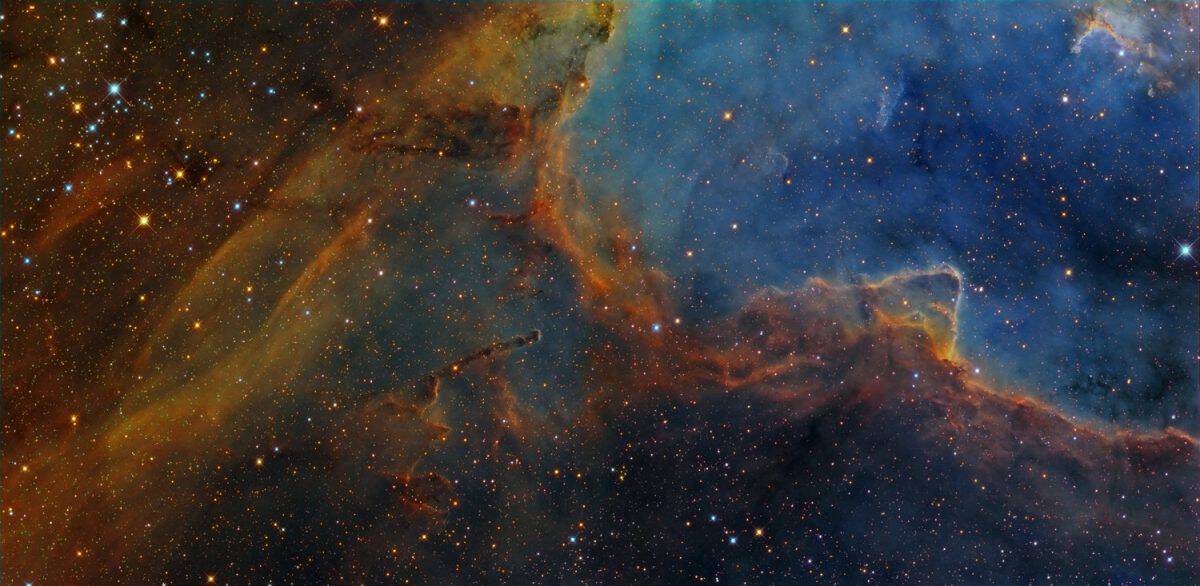The Cosmos with NGC 1027 and IC 1805
NGC 1027 is an open cluster in the constellation Cassiopeia. It was discovered by William Herschel in 1787. It is visible at the eastern part of the constellation, between two emission nebulae, the Heart and Soul Nebula. However, it is not physically associated with the two nebulae, lying in the foreground, about 3,000 light years away from the Solar System. The apparent magnitude of the cluster is 6.7 and can be seen with 10×50 binocularsaround a 7th magnitude star, which is not however member of the cluster. The brightest member of the cluster has apparent magnitude 9,3
The Heart Nebula, IC 1805, Sharpless 2-190, lies some 7500 light years away from Earth and is located in the Perseus Arm of the Galaxy in the constellation Cassiopeia. It was discovered by William Herschel on 3 November 1787. This is an emission nebula showing glowing ionized hydrogengas and darker dust lanes.
The very brightest part of this nebula (the knot at the western edge) is separately classified as NGC 896, because it was the first part of this nebula to be discovered.
The nebula’s intense red output and its configuration are driven by the radiation emanating from a small group of stars near the nebula’s center. This open cluster of stars known as Melotte 15 contains a few bright stars nearly 50 times the mass of our Sun, and many more dim stars that are only a fraction of our Sun’s mass.
